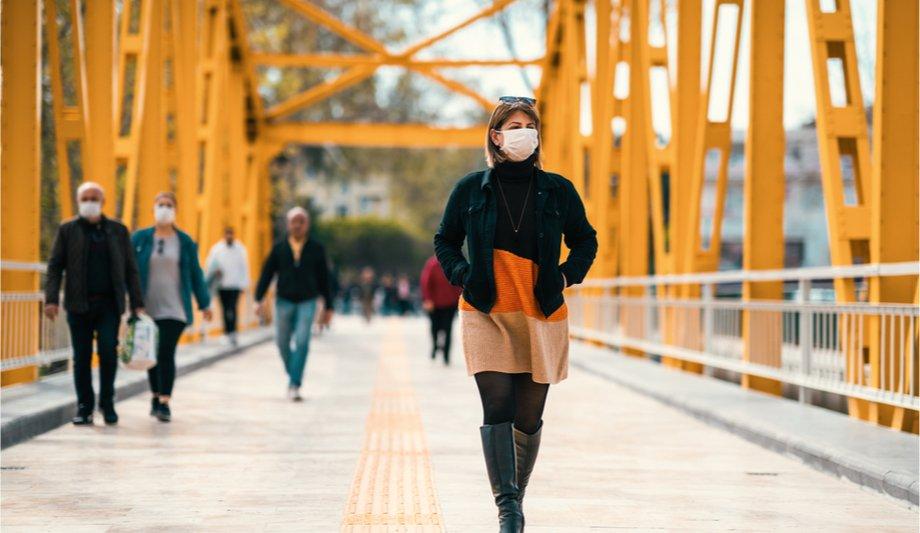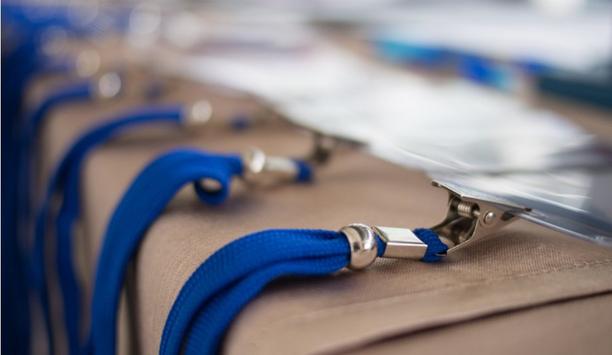People have always had an innate need to feel secure, from building fires at the front of caves that ward off predators in prehistoric times, to today’s efforts of locking your front door. This need for security extends to venturing further afield from the home and is critical for communities to thrive and survive. More than ever, people want to be and feel safe; protected against physical and now biological threats.
When it comes to staying safe, populations around the world have recently demonstrated immense adaptability to changing the way we live our lives in order to protect ourselves and others. In the wake of the COVID-19 pandemic, it isn’t strange to walk down a high street and not see swathes of people wearing face masks, where as little as six months ago it may have been an unnerving sight. While wearing a mask may not be a choice made by the majority in ordinary times, people are compliant as it is helping them get back to a “new” normality in day-to-day interactions.
The same can be said for the use of technology. Beyond pure security, the technologies used to keep the public safe can become integrated into existing environments to make it easier to stay safe while visiting areas where there could be safety risks.
Technologies used to keep the public safe can become integrated into existing environments
Technology enabling freedom
A good example of this is airports. The aftermath of the 9/11 attacks in 2001 changed how we are checked in at airports before boarding a flight, and I’m sure countless lives have been saved as a result of this more stringent security measures.
However, the development of new technologies, which have been created against the backdrop of a more threat conscious world, could mean we are able to relax the experience of going through airport security for travellers. We now have innovations to spot, amongst hordes of people, those who pose a threat, while blending in with the general public. If we are able to make these identifications before an act is committed, we can cut out some of the draconian measures we are all so used to with scanning passengers before travel at a security checkpoint. If this is the case, then we could get to a model whereby you can pass through transport hubs, like airports, more freely, as fewer visible, large, overt checkpoints will be needed. And best of all, these new technologies can protect personal identity and civil liberties, until a threat object or behaviour is detected.
Concealable security solutions
Today, visible checkpoints scan people in masses, using such large, wieldy devices, such as metal detectors, millimetre machines and hundreds of surveillance cameras peeking down from the ceilings. The use of these systems, which can feel intrusive and hold people up as they wait to pass through, can be reduced by employing new, innovative and concealable security solutions that are able to detect threats, but blend in with the existing environment; basically unseen, but always watching.
For example, new advancements in magnetic technologies can be concealed in everyday objects that are aesthetically pleasing, such as planter boxes, which people walk past these every day without really noticing. These threat detection sensors, concealed in planter boxes, can scan individuals and their bags for catalogued metal objects. They can distinguish between those that may pose a threat, e.g. gun, knife, rifle, and those that are unlikely to, e.g. phone, keys. With this advanced magnetic technology, it becomes possible to discover weapons on a person's body, allowing for immediate alert notification to onsite security.
Beyond physical objects, there are also small, concealable sensors that can detect, diagnose and track airborne trace explosives, chemical warfare agents and volatile organics. These sensors use tuneable electronic signals to detect chemical threats with a parts-per-billion sensitivity and can then send an immediate threat alert to security to investigate further.
Threat detection sensors
Innovative threat detection sensors can be integrated with existing security solutions
These new, innovative threat detection sensors can be integrated with existing security solutions, such as access control systems, as well as security policies and procedures to enhance the effectiveness and performance of onsite security personnel and first responders. A great example of integration is using AI-driven/computer vision object recognition software with existing CCTV systems to detect visible threats, such as guns or knives. Every second in an early warning notification of a visible weapon drawn can save lives and possibly stop an attack from being carried out. Security and law enforcement can be alerted in real-time of the location and nature of the incident, so that action can be taken immediately.
Extending the security perimeter with new detection sensors means security personnel and law enforcement don’t have to rely on someone reaching a checkpoint before a physical or chemical-based weapon is detected. And as these solutions get deployed more and more, awareness of these technologies seep into the marketplace. Would be assailants will be more likely to be deterred, as they think about walking along a path to the building or checkpoint and getting caught before they can instigate an attack. And to my earlier point, it also affords law abiding citizens more freedom to move around public spaces as they do not need to go through the lengthy security checks that we currently experience.
Addressing current threats to act fast
Unfortunately, annually we are seeing a rise in gun crime and knife attacks in soft target areas, with daily incidents reported across the US and UK. This has been exacerbated, specifically in the US, by the coronavirus pandemic and civil unrest, where gun sales have escalated in recent months - the FBI conducted 3.7m background checks on those wishing to purchase firearms in March 2020, an increase of 1.1m over March 2019. With so many more guns on the street, it increases the opportunity for bad actors to use these weapons with ill intent within their communities.
It is important to harden soft target areas where our communities gather, such as schools, churches, resorts, office buildings, and stadiums and arenas. However, the nature of these venues - somewhere to meet, have fun and relax - do not lend themselves to prison-style, fortress-feel security measures. As well as the big, overt and visible technologies mentioned before, can in fact prove targets for terror. However, the good news is that some public sites have started to invest in and install these new innovative weapon detection solutions. This contributes to the creation of a seamless experience for civilians, who are able to enter and enjoy these locations without forsaking the way of life they have come to know and love, without divesting item in their pockets, pat downs, and slow walkthrough security scanners.
Making public areas safer
Beyond single-site installations at these locations, city managers and city councils are now looking at the widespread deployment of these new, concealable, touchless and unobtrusive security technologies, all with a goal to make their public areas safer.
Once a threat is detected in one venue, an alert can be sent out in the immediate area
Furthermore, by having an interconnected security system, once a threat is detected in one venue, an alert can be sent out in the immediate area. This will be picked up by other local security personnel in nearby sites, so they can be on guard to protect members of the public around their premises, as well as support law enforcement in finding and neutralising the threat.
We’ve all heard the phrase smart cities, but with innovations in physical and biological threat detection, these cities can be as safe as they are smart.





















